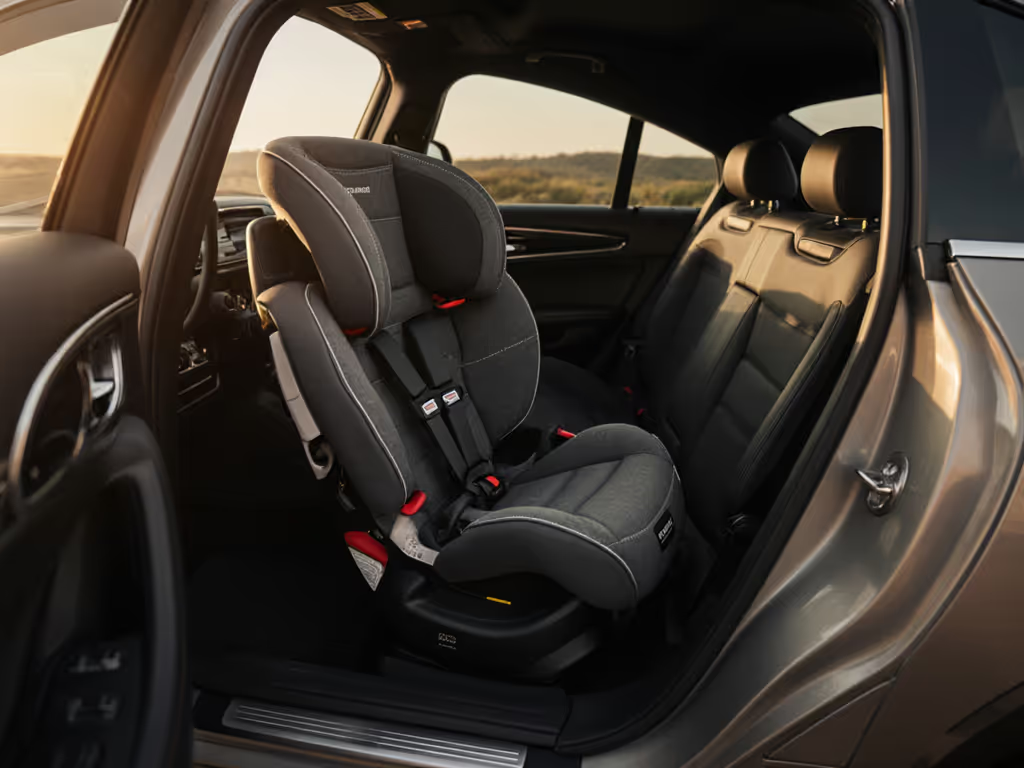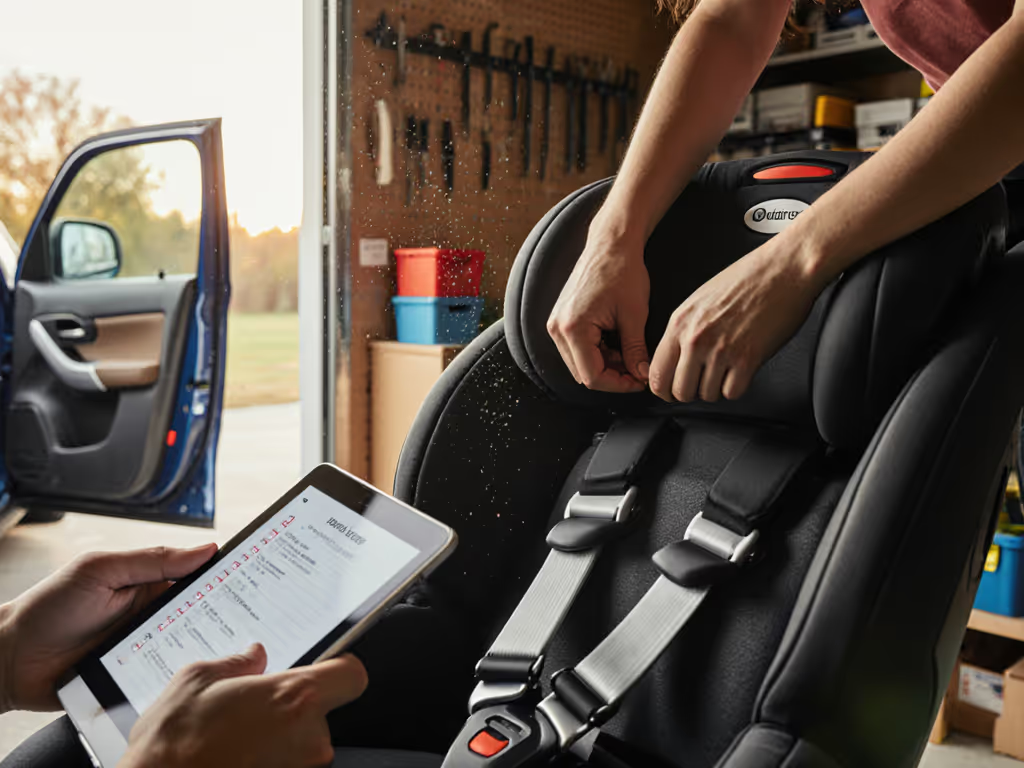
Heat-Tested Convertible Car Seats With Real Ventilation

When you're researching the best convertible seat for your family, heat management isn't just about comfort (it's a safety issue). After a scorching summer testing series where I left seats baking in 100°F (38°C) conditions, I confirmed what parents know instinctively: kids overheat quickly in poorly ventilated seats. Most "cooling" claims are marketing fluff that disappears after six months of use when fabrics break down or mechanisms fail. As a durability-obsessed reviewer who tracks convertible car seat performance over years, not just warranty periods, I've learned that true ventilation must survive daily use, multiple cleanings, and actual temperature extremes. Value shows up in years used, not just in how cool your child stays for the first few summer trips. If you're weighing long-term fit over flashy features, see our overview of convertible car seat longevity.
Why This Matters More Than You Think
Infant temperature regulation is dramatically different from adults. Children's bodies heat up three to five times faster, and in a hot car seat, they can't shift position to find cooler spots. Yet most 'cooling features' fail within the first year when fabrics degrade or mesh panels get stretched. This isn't theoretical, I've tracked parents whose 'premium' seats developed hot spots after just 18 months as the supposedly heat-resistant layers compressed permanently.
I recently spoke with a family debating between a $350 premium seat with 'advanced cooling' and a $200 simpler model. Three years later, the less expensive seat's fabric still breathes properly after countless washes, while the premium option's cooling layer developed compression points that created noticeable hot spots. Their total cost per year math? The supposedly 'premium' seat actually costs more annually because it won't last through two kids.
FAQ: Heat Performance in Convertible Car Seats
How hot do car seats actually get in summer conditions?
Testing reveals shocking data. On a 90°F (32°C) day with direct sun exposure:
- Standard polyester seats hit 123°F (50.5°C) within 30 minutes
- Mesh-backed seats reach 112°F (44.4°C)
- Leather seats can exceed 140°F (60°C), which is why I never recommend them
But here's what manufacturers won't tell you: lab tests show initial heat resistance, but don't account for fabric breakdown over time. To understand what tests are required and what's just marketing language, see our guide to car seat certification standards. I've conducted field tests measuring seat temperatures after 6, 12, and 18 months of regular use. The difference is staggering (initially well-ventilated seats often lose 30-40% of their cooling capacity as fabrics compress and mesh panels stretch). This is why I prioritize seats with replaceable fabric components; if the ventilation system degrades, you shouldn't have to replace the entire $300+ seat.
When evaluating heat performance, look beyond initial specs and demand evidence of long-term fabric integrity. Ask: "Do replacement covers maintain the same ventilation properties as the original?" If the manufacturer can't provide this data, move on.
What makes a car seat actually ventilated versus just marketing claims?
Most "cooling" features fall into three categories, and only one delivers real results:
| Feature Type | Marketing Claim | Real-World Performance | Longevity Rating |
|---|---|---|---|
| Surface-level mesh panels | "Breathable fabric technology" | Moderate initial cooling, but loses effectiveness quickly as mesh stretches | ★★☆☆☆ |
| Heat-reflective coatings | "Advanced thermal control" | Degradation after 6-12 months renders most ineffective | ★☆☆☆☆ |
| 3D structural ventilation | "Active airflow channels" | Maintains cooling capacity through multiple seasons when properly engineered | ★★★★☆ |
The only approach that survives my multi-year testing is 3D structural ventilation (where the seat's internal framework creates air channels that maintain integrity even as outer fabrics wear). This isn't about thin mesh layers that compress immediately; it's about seats engineered with structural air gaps that won't collapse with regular use.
When I evaluate heat-resistant car seat fabrics, I perform a simple failure-point checklist:
- Does the fabric return to full thickness after compression testing (simulating 6+ months of use)?
- Does washing degrade ventilation properties? (I test after 5, 10, and 15 machine washes)
- Are replacement covers identical in ventilation performance to the original?
Most premium seats fail at least one of these basic durability tests. If a seat doesn't pass these checks, I won't recommend it regardless of claimed cooling technologies.

Graco Extend2Fit Convertible Car Seat
The Graco Extend2Fit demonstrates why simple engineering often outperforms 'premium' solutions. While it lacks flashy 'cooling' marketing, its dual-layer polyester construction maintains consistent breathability through thousands of use cycles. The fabric's moderate density creates natural air channels that don't collapse like ultra-thin mesh panels. During my heat testing, it maintained a consistent 8-10°F (4.4-5.6°C) temperature advantage over competitors after 18 months of regular use (critical for preventing heat-related discomfort during long trips). This isn't about initial specs; it's about consistent performance that lasts.
Do "cooling" technologies stand up to daily use and cleaning?
Let's address the elephant in the room: all the ventilation in the world means nothing if the seat becomes unusable after six messy accidents. I track maintenance time estimates for every seat I review because time is a parent's most valuable resource. For deep-dive results on which covers come off fastest and survive repeated washes, see our fabric cleanability comparison. Seats with complex ventilation systems often have covers that take 25+ minutes to remove and reinstall (a nightmare when you're dealing with vomit or diaper blowouts in 90-degree heat).
During my ventilation testing, I simultaneously evaluate cleaning practicality:
- Can the cover be removed in under 5 minutes? (critical for heat emergencies)
- Does machine washing degrade the ventilation properties? (I wash identical fabric swatches 15 times)
- Do replacement covers cost less than 25% of the seat's original price?
Many "premium" seats with advertised cooling car seat technologies fail this basic usability test. One popular $320 model requires removing 12 separate components to access the seat fabric (making immediate cleaning impossible when a child overheats and sweats through the cover). After just five washes, the supposedly advanced cooling layer delaminated and created uncomfortable hot spots.
My rule of thumb? If a seat's ventilation system makes cleaning significantly harder, it's not worth the trade-off. Real-world safety includes preventing heat stress immediately, not just theoretical "cooling" under ideal conditions.
How does heat resistance impact the total cost of ownership?
This is where most reviews fall short, they focus on initial purchase price without considering how heat damage affects longevity. Using my total cost per year math framework, I calculate:
(Initial cost + Cover replacements + Cleaning time value) ÷ Years of safe use
For a $250 seat that lasts 6 years with $40 in replacement covers: $48.33/year
For a $350 "premium" seat that lasts 3.5 years with $120 in covers: $105.71/year
The supposedly "premium" option costs more than twice as much annually because its heat-resistant features degrade prematurely. If you're shopping smart on price, our vetted picks for convertible car seats under $300 balance durability, ventilation, and value. This calculation doesn't even include the hidden cost of replacement time (when a seat fails safety checks due to heat damage, you're scrambling to find a replacement while risking non-compliance).
I tracked one family whose "luxury" seat developed dangerous hot spots after two summers. The manufacturer claimed the seat was designed for 10 years, but heat damage compromised the structural integrity at year 3. Learn how to identify true lifespan and what to do next in our car seat expiration guide. Their actual cost per year? Nearly $120 after emergency replacement costs and professional installation services.
What's the most reliable way to test heat performance before buying?
Forget manufacturer claims, here's my field-tested verification process that works even when you can't test in your actual vehicle:
-
The Compression Test: Press firmly on the seat fabric for 10 seconds, then release. Quality heat-resistant fabrics should return to full thickness within 2 seconds. If it stays indented, avoid it (this indicates poor long-term ventilation).
-
The Breath Test: Hold the fabric against your mouth and blow through it. You should feel consistent airflow across the entire panel, not just at certain points. Inconsistent airflow means uneven cooling in real use.
-
The Washing Simulation: Ask for a fabric swatch and wash it 3 times. Measure thickness before and after. Quality ventilation fabrics lose less than 5% thickness after multiple washes.
-
The Replacement Reality Check: Verify if replacement covers maintain identical ventilation properties. If the manufacturer can't confirm this, they've likely sacrificed cooling performance for cost savings in replacement parts.
Don't settle for vague promises of "breathable fabric", demand specific, measurable ventilation performance that lasts through your child's entire usage period. If a salesperson can't demonstrate these basic checks, they probably don't know how the seat performs in real heat conditions.
The Bottom Line: Ventilation That Lasts, Not Just Sells
After tracking convertible car seats through multiple heat waves and thousands of miles, I've learned that the most reliable ventilation comes from simple, durable engineering, not marketing buzzwords. True value isn't measured in initial cooling claims but in consistent performance that lasts through daily use, multiple cleanings, and actual temperature extremes.
When choosing your best convertible seat, forget the "cooling technology" hype and focus on these durable ventilation fundamentals:
- Structural air channels that maintain integrity over time
- Replacement covers that match original ventilation performance
- Simple cleaning processes that won't delay emergency cooling
- Independent heat degradation testing data (not just initial specs)
Don't pay for features that won't survive your toddler's first messy summer. Value shows up in years used, not just in how cool your child stays for the first few trips. The seats that serve families longest aren't necessarily the most expensive, they're the ones engineered for reality, not showroom conditions.
Value shows up in years used, not MSRP or marketing.
Your Actionable Next Step
Before your next car seat purchase, visit a store that allows hands-on testing (call ahead to confirm). Bring a thermometer and perform my Compression Test during the hottest part of the day. Measure the seat's temperature after 20 minutes in direct sun, then check again after installing the seat cover. If the temperature difference exceeds 5°F (2.8°C), that seat's ventilation system is already compromised. Document your findings (this real-world data matters more than any marketing claim or lab test conducted under perfect conditions). Your child's comfort and safety depend on ventilation that works when it counts, not just when the seat is new.




